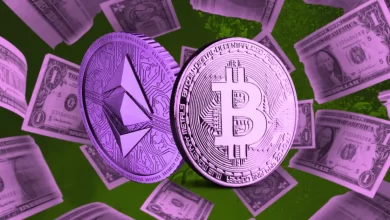The Battle of the Blockchains: Comparing Ethereum 2.0, Binance Smart Chain, and Others
In the ever-evolving landscape of blockchain technology, the competition among different blockchains intensifies. Ethereum 2.0, Binance Smart Chain, and several others have emerged as key players, each vying for supremacy with unique features and capabilities. In this in-depth analysis, we delve into the intricacies of these prominent blockchains, comparing their architectures, consensus mechanisms, scalability solutions, and real-world applications.
Ethereum 2.0: The Pioneer’s Evolution
1. Poised for Proof-of-Stake:
- Explore Ethereum 2.0’s transition from Proof-of-Work to Proof-of-Stake consensus.
- Understand the implications for scalability, energy efficiency, and network security.
2. Shard Chains and Scalability:
- Delve into Ethereum 2.0’s sharding mechanism.
- Discuss how shard chains enhance scalability by parallelizing transaction processing.
3. Smart Contracts and Decentralized Applications (DApps):
- Examine the continued dominance of Ethereum in hosting smart contracts and DApps.
- Discuss the impact of Ethereum’s upgrades on the broader ecosystem.
Binance Smart Chain: A Challenger’s Rise
1. Binance Chain vs. Binance Smart Chain:
- Differentiate between Binance Chain and Binance Smart Chain.
- Explore how Binance Smart Chain introduces smart contract functionality while leveraging Binance Chain’s infrastructure.
2. Dual Consensus Mechanism:
- Understand Binance Smart Chain’s dual consensus mechanism.
- Discuss how a combination of Proof-of-Stake Authority (PoSA) and Delegated Proof-of-Stake (DPoS) enhances speed and efficiency.
3. Low Transaction Costs and Speed:
- Explore Binance Smart Chain’s competitive edge in terms of transaction costs and speed.
- Discuss the implications for decentralized finance (DeFi) and other applications.
The Landscape Beyond: Other Notable Blockchains
1. Polkadot:
- Examine Polkadot’s unique approach to interoperability.
- Discuss how the relay chain and parachains enable cross-chain communication and collaboration.
2. Solana:
- Dive into Solana’s focus on high-performance decentralized applications.
- Explore its Proof-of-History (PoH) consensus mechanism and its impact on transaction throughput.
3. Cardano:
- Explore Cardano’s commitment to sustainability and scalability.
- Discuss its Proof-of-Stake (PoS) consensus mechanism and plans for decentralized governance.
Comparative Analysis: Key Metrics
1. Transaction Throughput:
- Compare the transaction throughput of Ethereum 2.0, Binance Smart Chain, Polkadot, Solana, and Cardano.
- Analyze how each blockchain addresses scalability challenges.
2. Security Measures:
- Evaluate the security measures implemented by each blockchain.
- Discuss the resilience of their consensus mechanisms against potential attacks.
3. Developer Ecosystem:
- Assess the vibrancy of developer ecosystems on Ethereum 2.0, Binance Smart Chain, and other contenders.
- Explore the availability of tools, resources, and community support.
Real-World Applications and Adoption
1. Decentralized Finance (DeFi):
- Explore the dominance of certain blockchains in the DeFi space.
- Discuss the challenges and opportunities faced by DeFi platforms on different blockchains.
2. Non-Fungible Tokens (NFTs):
- Examine the role of various blockchains in the NFT craze.
- Discuss the impact of blockchain choices on NFT marketplaces and token standards.
3. Enterprise Adoption:
- Investigate the adoption of blockchains in enterprise solutions.
- Discuss real-world use cases and partnerships that showcase the practical applications of these technologies.
The Path Forward: Evolution and Challenges
1. Upcoming Upgrades:
- Explore the roadmaps of Ethereum 2.0, Binance Smart Chain, and other blockchains.
- Discuss upcoming upgrades and their potential impact on performance and functionality.
2. Interoperability Initiatives:
- Discuss the growing importance of interoperability in the blockchain space.
- Explore initiatives and projects aimed at facilitating seamless communication between different blockchains.
3. Regulatory Considerations:
- Address the evolving regulatory landscape for blockchain technologies.
- Discuss how regulatory developments may influence the adoption and evolution of these blockchains.
Conclusion: Deciphering the Future of Blockchains
As the battle of the blockchains unfolds, Ethereum 2.0, Binance Smart Chain, and other contenders are shaping the future of decentralized technologies. This comprehensive analysis provides a nuanced understanding of their architectures, applications, and competitive advantages. Whether you’re a developer navigating the blockchain landscape or an enthusiast exploring the possibilities of decentralized applications, this exploration serves as a guide to decipher the intricate dynamics of the evolving blockchain ecosystem.







